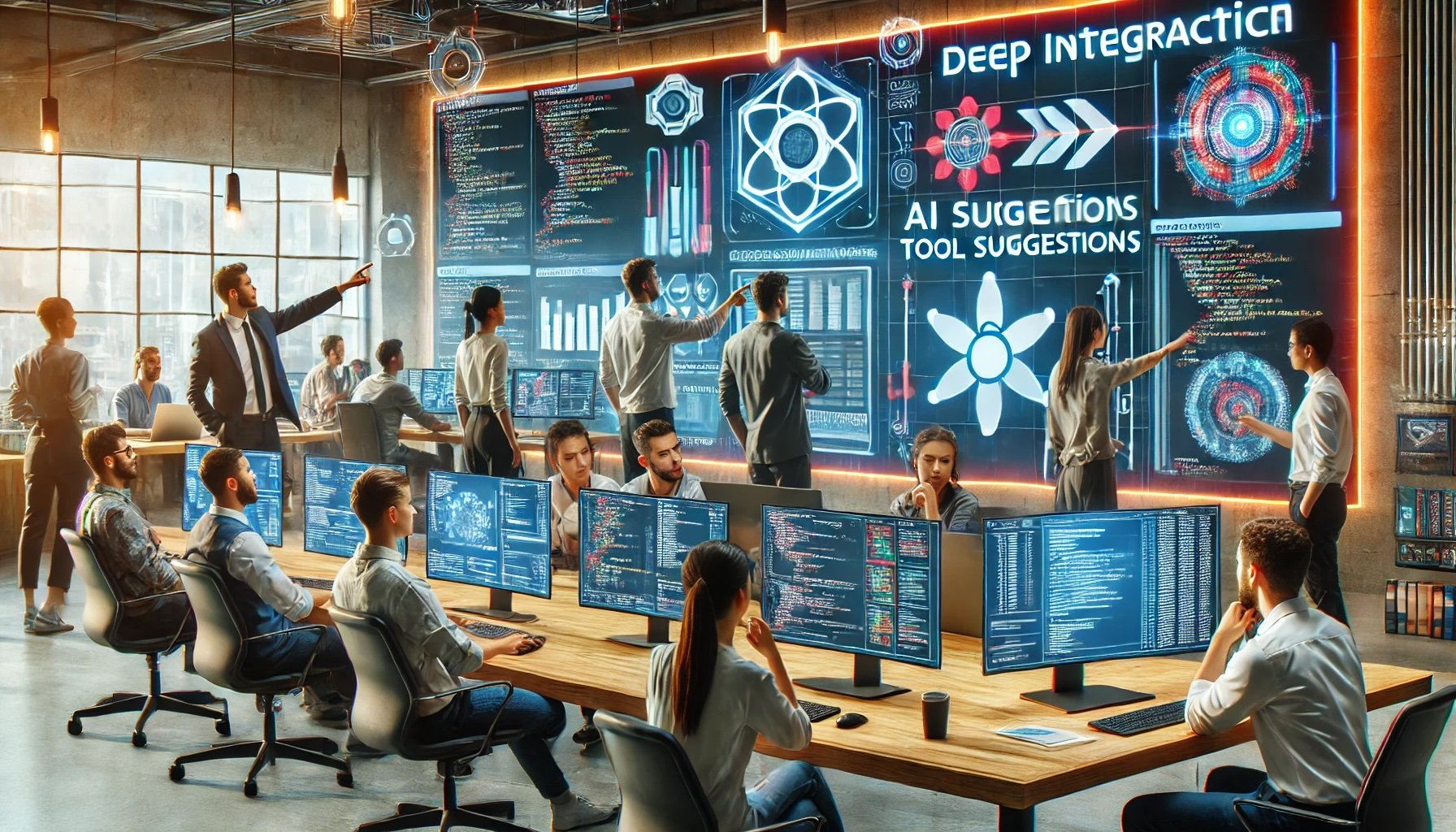Reimagining Software Development in the Age of Generative AI: Part Four
Deep Integrations over Abstractions—Leveraging Specific Technologies for Collaborative Advantage
In the previous post, Part Three of our series explored AI-driven collaboration and enhanced workflows. Now, Part Four focuses on the impact of choosing specific technology stacks over generic tools—demonstrating how deep integrations can elevate productivity, streamline workflows, and unlock the full potential of AI-assisted development.
As the software development landscape evolves with the integration of generative AI and Large Language Models (LLMs), the choices we make in technology stacks have a profound impact on productivity and collaboration. While abstractions and generic tools offer flexibility, they can also introduce complexity and hinder the full potential of AI-assisted development. Embracing specific technologies for deeper integrations allows teams to leverage advanced features, streamline workflows, and enhance collaboration across all roles.
Advantages of Specific Technology Stacks
Leveraging Advanced Features
Choosing a specific technology stack enables developers to tap into specialized features that generic tools might not support. This specialization allows for more efficient and powerful solutions tailored to the project's needs. By aligning the technology stack with the project's goals, teams can optimize performance and deliver superior user experiences.
Moving Beyond Generic Abstractions
Generic abstractions often aim to be one-size-fits-all solutions, accommodating multiple technologies but not fully exploiting the capabilities of any particular one. While they provide flexibility, they can also lead to unnecessary complexity and suboptimal performance. By committing to specific technologies, teams can avoid the pitfalls of lowest common denominator approaches and unlock the full potential of their chosen tools.
Case Study: PostgreSQL and pgvector
A prime example of leveraging specific technologies is the use of PostgreSQL with the pgvector extension for applications involving vector similarity searches, such as Retrieval-Augmented Generation (RAG) implementations.
PostgreSQL with pgvector Extension
PostgreSQL is a powerful, open-source relational database that offers robustness and scalability. The pgvector extension enhances PostgreSQL by adding support for vector data types and similarity searches. This allows developers to store embeddings and perform efficient nearest neighbor searches directly within the database.
By integrating pgvector, developers can build applications that require machine learning functionalities without the need for separate vector databases. This deep integration simplifies the architecture, reduces latency, and improves maintainability.
Avoiding Messy Abstractions
Tools like LangChain aim to support multiple vector stores and databases, providing a layer of abstraction over different technologies. While this flexibility is valuable in some contexts, it can introduce complexity and obscure the unique advantages of specific technologies. By choosing PostgreSQL with pgvector, teams can avoid the overhead of additional abstractions and focus on optimizing their application within a consistent technology stack.
Benefits for the Entire Team
Enhanced Capabilities
Specialized tools provide business owners with better analytics and insights. For example, integrating advanced database features can enable more sophisticated data analysis, leading to informed decision-making. UX designers benefit from the ability to create more dynamic and responsive interfaces, as the underlying technology supports richer interactions and faster data retrieval.
Improved Collaboration
Deep integrations allow team members to work more effectively together by providing a shared foundation. Developers, designers, and business stakeholders can collaborate closely, understanding each other's constraints and capabilities within the specific technology stack. This mutual understanding fosters a more cohesive team dynamic and accelerates the development process.
Simplified Communication
A focused technology stack reduces the need for translations between different abstractions or technologies. Team members can communicate more clearly about features, issues, and solutions without the confusion that can arise from juggling multiple tools or frameworks. This clarity enhances efficiency and reduces the likelihood of miscommunication.
Simplifying Onboarding and Training
By standardizing on specific technologies, organizations can simplify the onboarding process for new team members. Training materials, documentation, and best practices can be tailored to the chosen stack, accelerating the learning curve. LLMs can assist in this process by providing context-aware code suggestions and explanations, helping new developers become productive more quickly.
Maximizing AI Potential
When AI models are tuned to specific technologies, their effectiveness increases significantly. LLMs can provide more accurate code completions, better debugging assistance, and more relevant suggestions when they operate within a well-defined context. This specialization enhances the productivity gains from AI-assisted development.
Conclusion
Embracing specific technologies for deep integrations offers substantial advantages over relying on generic abstractions. By leveraging advanced features, improving collaboration, and simplifying communication, teams can enhance productivity and deliver higher-quality software.
This approach aligns with the strengths of generative AI and LLMs, enabling them to operate more effectively within a consistent technology stack. As we continue to explore the possibilities of AI-assisted development, making intentional technology choices becomes increasingly important.
In our next and final post of this series, we'll discuss how enhancing frameworks and embracing AI can shape the future of collaborative development, further unlocking the potential of both human and artificial intelligence in software creation.

